Posted by Richard Redding
I am an archaeozoologist, which means I identify and analyze all the fragments of animal bone that come form archaeological sites. I use the information I gather from the fragmented animal bones to examine the diet of the inhabitants and to try and reconstruct their subsistence system. What animals are the residents at a site consuming and what tactics and strategies are they employing? At Giza, in a larger sense, I am trying to understand the economic and social infrastructure of pyramid construction. To get an idea of what I do I suggest you see the “Feeding the Pyramid Builders” article.
To identify the fragmentary bone remains from a site I need to have comparative skeletons of all the animals that might occur. I am always on the look out for animals that I can skeletonize and a big part of my job on any site is compiling a comparative collection. Many years ago, when I had just started in archaeology, I was working in southwestern Iran, and a very famous French archaeologist said to me, rather dismissively, “This collecting of animals, this is not archaeology.” Well, it most definitely is. Some of the most interesting insights about our site have come from analyzing the animal bones.
However, the process of skeletonizing animals does not make me very popular with my colleagues. They usually prefer that I do it as far away as possible. I start with a dead animal, which I cut as much of the flesh off of as I can.
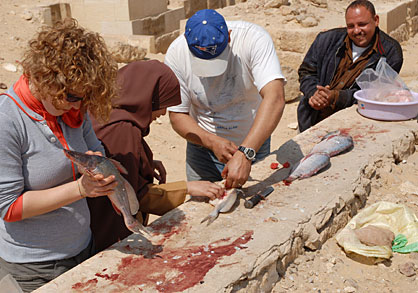
Cleaning Fish (Photo by Richard Redding)
I then dry the body in the sun for a couple of days.
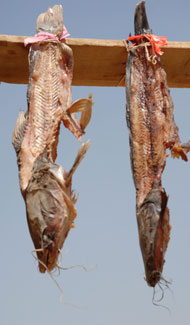
Drying fish (Photo by Richard Redding)
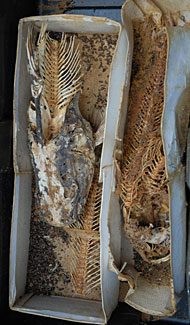
Bug Box (Photo by Richard Redding)
Then the body goes into my “bug box.” This is a large plastic trunk that contains a colony of dermestid beetles. The larvae of the beetles love slightly decaying flesh and consuming it, they leave me a pristine skeleton.
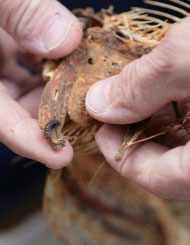
A larva hard at work (photo by Hillary Mcdonald)
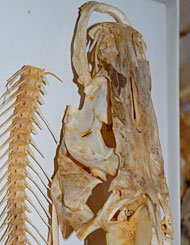
A cleaned fish skeleton – thank you bugs (photo by Richard Redding)
My archaeozoological colleagues and I then use these skeletons in our lab to identify the thousands of bones coming from our excavations.
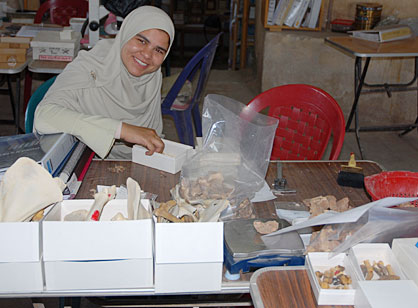
My colleague Rasha Nasr in our Lab at Giza identifying bone. Note the comparative collections in the foreground (Photo by Richard Redding)
Richard Redding
